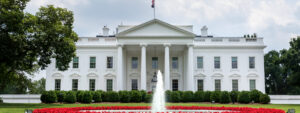The White House has announced plans to dismantle the U.S. Department of Education. Supporters see it as a necessary step toward reducing federal control and giving states more power over education. Critics, however, warn that it could lead to greater inequality and a loss of crucial funding for schools.

A Brief History of the Education Department
Established in 1979 under President Jimmy Carter, the Department of Education has played a key role in shaping national education policies. It oversees federal education funding, enforces civil rights laws in schools, and manages initiatives like student loan programs. Over the years, it has been at the center of major reforms, including the No Child Left Behind Act and Common Core Standards.
Despite its influence, some argue that the department has become too bureaucratic, inefficient, and overreaching—leading to calls for its elimination.
Why the White House Wants to Dismantle It
The White House and its conservative allies believe that education decisions should be made at the state and local levels. Here’s why they support this move:
- More Local Control: States and communities, they argue, understand their own education needs better than a federal agency. Decentralizing power would give them more freedom to set policies that fit their unique challenges.
- Reducing Bureaucracy: Critics claim the department wastes billions of dollars while failing to significantly improve student outcomes. Shutting it down, they argue, would free up funds for more effective use.
- School Choice & Innovation: Many conservatives believe that limiting federal involvement would allow more school choice, such as charter schools, vouchers, and homeschooling, giving parents greater control over their children’s education.
- Ending Federal Mandates: Opponents of the department argue that federal mandates—like standardized testing and curriculum guidelines—restrict innovation and flexibility in education.
Concerns from Critics
Not everyone sees this as a positive change. Teachers’ unions, education policy experts, and civil rights organizations have raised several concerns:
- Widening Inequality: The federal government plays a crucial role in ensuring equal access to education. Without it, wealthier states might thrive while poorer states struggle to maintain quality education.
- Loss of Funding for Schools: The department distributes billions of dollars to support low-income schools, students with disabilities, and federal financial aid for college students. Critics fear that without federal oversight, these programs could suffer.
- Political Influence on Curriculum: Some worry that shifting education control entirely to states could lead to political interference, with subjects like history and science being taught differently across regions.
- Uncertainty for Higher Education: The department manages federal student loans and grants. If dismantled, it’s unclear how these programs would be managed, potentially causing disruptions for millions of college students.
The Political and Public Divide
The proposal has deepened political divisions in Washington. Republicans and conservative think tanks largely support the move, arguing that it aligns with the principles of limited government. On the other hand, Democratic leaders warn that eliminating the department could reverse decades of progress in making education more accessible and equitable.
Public reaction is just as divided. While some parents and educators believe decentralization will improve education, others fear it will create chaos and make it harder for struggling schools to get the support they need.
What Could Happen Next?
If the plan moves forward, several possible outcomes could emerge:
- A Patchwork Education System: With states setting their own rules, education quality and standards could vary significantly across the country.
- Expansion of Private and Charter Schools: The shift away from federal control might accelerate the growth of alternative schooling options.
- Legal and Political Battles: Congress would have to approve the department’s elimination, and strong opposition could make this an uphill battle.
- Administrative Challenges: Responsibilities like student loans and civil rights enforcement would need to be reassigned, potentially leading to confusion and inefficiencies.
Final Thoughts
The decision to dismantle the Department of Education is one of the most significant—and controversial—education policy moves in recent history. While supporters believe it will lead to more efficient, locally controlled education, opponents fear it could increase inequality and disrupt vital programs.
As the debate continues, the future of American education hangs in the balance. Will this move empower states and improve schools, or will it create new challenges and leave millions of students vulnerable? Only time will tell.
